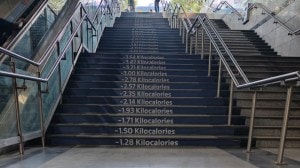History and haze in Kathmandu
In the Sixties and Seventies, during the days of hippiedom, psychedelic colours and guru shirts, when the Beatles ruled and Pandit Ravi Sh...

In the Sixties and Seventies, during the days of hippiedom, psychedelic colours and guru shirts, when the Beatles ruled and Pandit Ravi Shankar and Maharishi Mahesh Yogi were cultural and spiritual leaders for an entire generation in the West (and to a lesser degree here), all roads led to Kathmandu and Rishikesh.
The living was easy, the hash was cheap, the world appeared to be in revolt against established norms and a young generation, seeking a purpose, found it in the Himalayan foothills. Or so it seemed. There are few of these truth-seekers left in these places any longer, at least from that time.The world has moved on to other interests, other preoccupations. It has found new icons in Bill Gates and the Microsoft empire. Yet, in the hearts and spirits of men and women, the search for a Shangri-la continues. For a place where people live in peace and harmony, where the `civilised’ world does not intrude harshly. Otherwise, how can one explain the fact that Bill Gates’ popularity is matched only by that of the Dalai Lama, the spiritual leader from across the border, whose teachings are bestsellers and whose preaching draws huge crowds.
But to reduce Nepal to a few paragraphs of recent history would be grossly unfair: this is a rich and varied land, diverse and ethnically vibrant. Its landscape, especially in the middle and high Himalayas, is among the most magnificent in the world, drawing travellers and adventurers from all over. The forests have been devastated in the lower regions by unchecked felling. But the temples and places of traditional worship are still imposing. The Durbar Chowk of Bhaktapur, restored in recent years, is one of the most striking pieces of architecture in Asia. But other places have seen better days: smugglers from India, Nepal and the West have looted their treasures from the 1960s onwards and sent them off to grace private collections and famous museums in Europe and the United States.
These days, despite having overcome the absolute control of the monarchy through the people’s movement of 1990, the country is caught in a mire of bad governance, feuding politicians, a leftist insurrection to its west and extreme public disenchantment with its leaders and the political process. Sounds familiar?
Without being facetious and at the risk of being politically incorrect, the earlier days were also times when the Kathmandu Valley was clean and clear of pollution. Most people still prefer it as a trekking destination over India’s northern hills because the facilities are better. Till the 1980s, the hordes of Indian tourists who swarm the area had not yet discovered Nepal and traffic was not too dense.
Indians went to Kathmandu for two things: the women and children to shop, the men to drink and gamble. Many things were not available in India: Benson and Hedges cigarettes, American shirts and Wrangler jeans, colognes for men and perfumes for women, cut glass for the home, and cameras. These days, India has all this and more. But some people still go to Nepal, especially newly-weds, and they crowd the casinos, playing blackjack and the slot machines.
Kathmandu is overwhelmed with shops, traders, buyers and goods. But there is also the fascinating ghetto of Thamel, where the flower children once ruled and where masks, tankhas, jewellery and antique shops besides restaurants to cater to every taste (Thai, Austrian, Tibetan, hearty German fare and even Punjabi!) overflow onto the narrow lanes. Most visitors here walk, although three-wheel scooter rickshaws, motorcycles, bicycles and Maruti taxis speed about as well.
Thamel is the base for international trekking and mountaineering expeditions to the high Himalayas. Mountaineering gear of every major label is available, from snow-boots and down-lined parkas to thick gloves, sleeping bags, tents and thermos flasks. The whole kit for a major expedition can be rustled up in days.
But as the day wears on, an abiding impression grows whether it is in Lalitpur (also known now as Patan), Thamel or any other part of Kathmandu of civic collapse. The place looks as if it is turning into a large dump. This is not to criticise Kathmandu, for all South Asian cities from Dhaka to Karachi suffer from the same malaise: pressure on space, burgeoning populations and collapsing infrastructure as a result of lack of governance and pro-people policies. But it is especially sad to see it to one of Asia’s most fascinating cities. There are few places to dump refuse and entire streets and lanes are lined with rubbish. Valiant efforts are on to keep the stench at bay. Municipal trucks collect refuse every morning and workers attack the waste with brooms. But within a few hours, litter swamps the roads and bylanes again.
But most distressing is the blue haze that swamps the valley, forcing local residents to wear cloth bands over the nose and mouth. The haze dominates skylines, blocking out the mountains around.
It is easy to see where it comes from. Walk the streets of Kathmandu for an hour and you will come away with a very, very sick feeling. The haze comes from the ugly exhaust smoke belching from three-wheelers, trucks, buses and cars. There appears to be no pollution control on vehicles, although one is told that three-wheeler owners have been given a few years to phase out and then switch to the new electric-powered buses. Indeed, the heartening news is that there has been a surge of commercial interest in these non-polluting buses and that demand is outstripping supply. Although the nastier polluting vehicles, locally called Vikrants, have been forced out of business (of course, they were made in India, leading to the quip that even Nepal’s pollution was "imported from India".)
The problem is so acute that Prime Minister Krishan Prasad Bhattarai publicly says that he wants to see the quality of air so improved in Kathmandu that foreign tourists stop carrying masks. As noted earlier, many Nepali residents also wear such masks. Bad air does not care about nationality.
Part of the problem lies in the city’s location: it nestles in a narrow valley which traps the pollution, unless strong winds come to blow it away.
The physical location of Kathmandu cannot be changed. But unless attitudes to sanitation improve and basic infrastructure is upgraded to enable liquid and solid waste treatment and tackle air pollution, those who walk in Kathmandu will continue to come home with their clothes smelling of exhaust fumes.



- 01
- 02
- 03
- 04
- 05




























